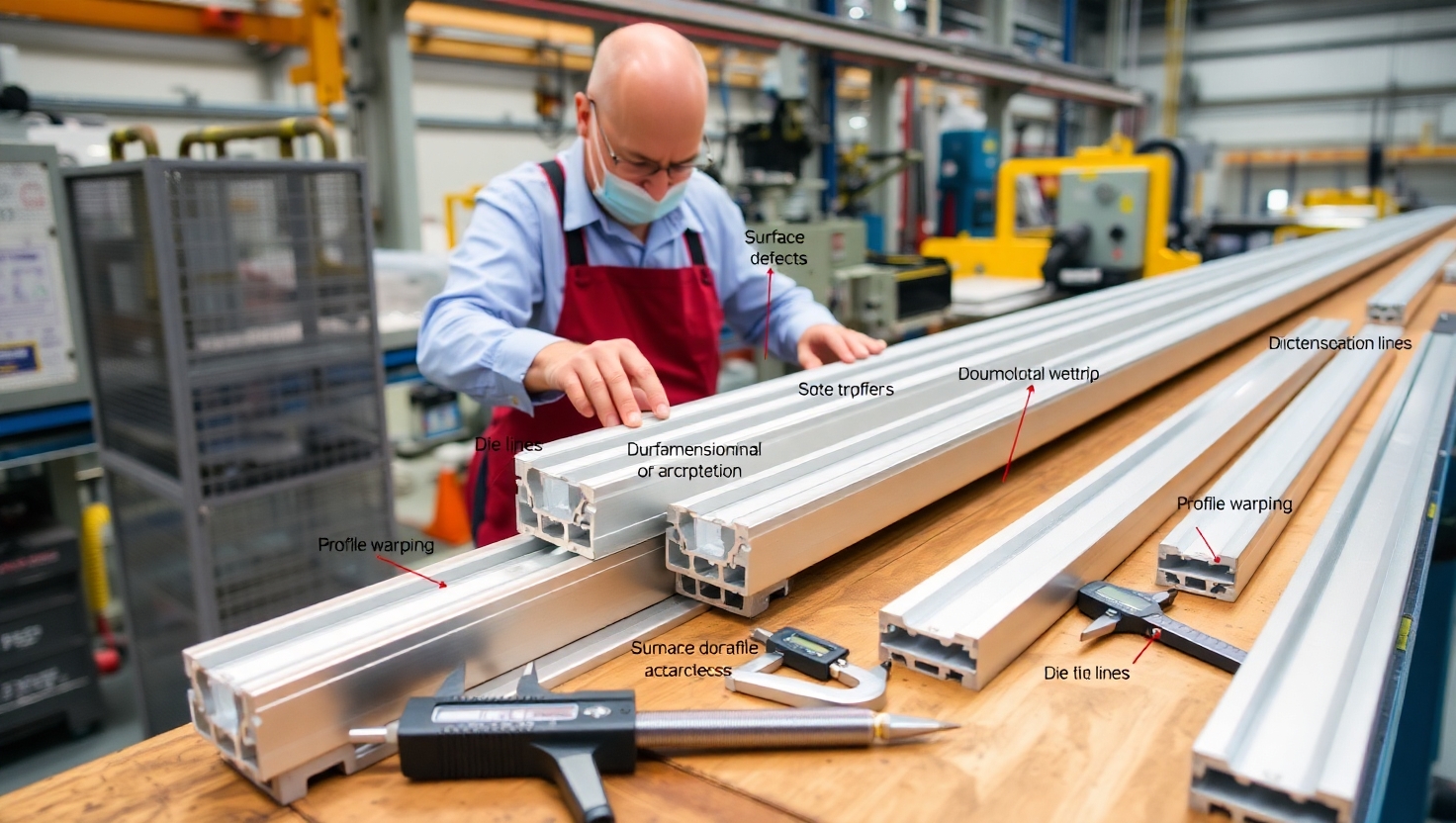5 Common Quality Control Challenges in Aluminum Extrusion — and Practical Solutions
Published by: ALUTimes | Date: July 17, 2025
Table of Contents
- Introduction
- 1. Dimensional Inaccuracy
- 2. Surface Defects
- 3. Profile Twisting & Bending
- 4. Alloy Contamination
- 5. Inadequate Documentation & Traceability
- Conclusion
Introduction
Aluminum extrusion is a widely adopted process for manufacturing precise profiles used in architecture, automotive, aerospace, and electronics. However, maintaining consistent product quality remains a challenge. This article explores five frequent quality control issues encountered in extrusion and provides actionable solutions that engineers, quality inspectors, and plant managers can implement for enhanced performance.
1. Dimensional Inaccuracy
Problem: Profiles often exceed tolerance limits, leading to rework or rejection by clients.
Causes:
- Improper die design
- Temperature variations in billet or die
- Incorrect ram speed or extrusion ratio
Solution:
- Use precision-ground dies with consistent preheat temperature
- Employ real-time dimensional scanning systems post-extrusion
- Train operators on speed-to-shape correlation
2. Surface Defects
Problem: Scratches, die lines, pits, or discoloration ruin aesthetic appeal and performance.
Causes:
- Contaminated dies or billet surfaces
- Poor alignment in handling systems
- Over-aged die steel or improper lubrication
Solution:
- Implement a die cleaning and inspection SOP
- Use Teflon or soft rollers during handling
- Replace worn dies and calibrate pullers regularly
3. Profile Twisting & Bending
Problem: Twisting affects structural integrity and increases scrap rate.
Causes:
- Uneven cooling during quenching
- Poor stretcher alignment
- Improper extrusion speed variations
Solution:
- Install automated air or water mist quenching systems
- Ensure proper stretcher calibration and load settings
- Use synchronized drive systems for better speed control
4. Alloy Contamination
Problem: Using wrong or mixed alloys results in inconsistent properties and poor corrosion resistance.
Causes:
- Improper billet storage or labeling
- Leftover metal in the container from prior batches
Solution:
- Use barcode or RFID systems for billet tracking
- Conduct container purge after each shift or batch
- Maintain a separate log of heat numbers for traceability
5. Inadequate Documentation & Traceability
Problem: Lack of batch traceability makes defect root-cause analysis difficult.
Causes:
- No centralized digital log of process parameters
- Manual records prone to error or loss
Solution:
- Adopt ERP-based quality control modules
- Use cloud-backed extrusion monitoring software
- Digitize all inspection, test reports, and approvals
Conclusion
While extrusion is a robust process, quality challenges can diminish customer trust and profits. By understanding these key issues and deploying smart, practical solutions, manufacturers can achieve better efficiency, product aesthetics, and compliance with global standards. Quality control is not just inspection—it’s about building process reliability from the ground up.

